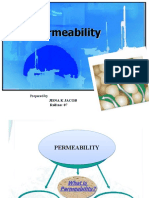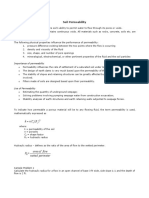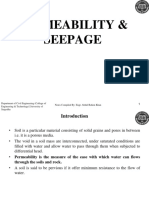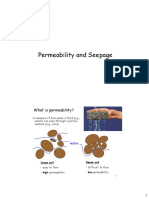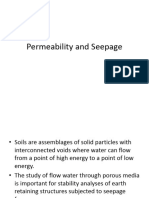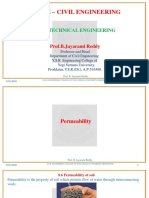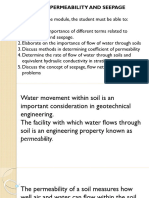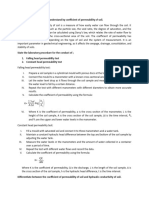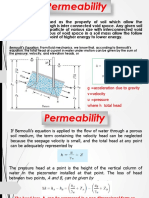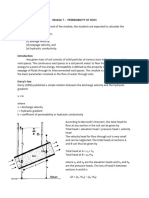0% found this document useful (0 votes)
55 views48 pages004 Permiability 2025
The document is a lecture by Dr. Deepak Khare on permeability, detailing its definition, significance in engineering, and the factors affecting it. It covers Darcy's Law, methods for determining the coefficient of permeability, and various tests such as constant and variable head permeability tests. Additionally, it discusses the impact of soil properties and structure on permeability, as well as the importance of understanding flow in stratified soils.
Uploaded by
shubbusingh126Copyright
© © All Rights Reserved
We take content rights seriously. If you suspect this is your content, claim it here.
Available Formats
Download as PDF, TXT or read online on Scribd
0% found this document useful (0 votes)
55 views48 pages004 Permiability 2025
The document is a lecture by Dr. Deepak Khare on permeability, detailing its definition, significance in engineering, and the factors affecting it. It covers Darcy's Law, methods for determining the coefficient of permeability, and various tests such as constant and variable head permeability tests. Additionally, it discusses the impact of soil properties and structure on permeability, as well as the importance of understanding flow in stratified soils.
Uploaded by
shubbusingh126Copyright
© © All Rights Reserved
We take content rights seriously. If you suspect this is your content, claim it here.
Available Formats
Download as PDF, TXT or read online on Scribd
/ 48
